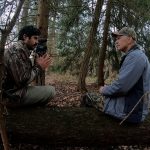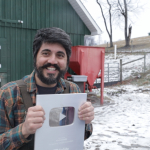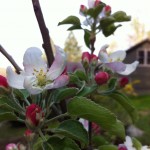In this series a professional butcher teaches how to butcher a whitetail deer from start to finish.
Using only simple hand tools, you too can use this easy method to skin, debone, trim, clean and package your own fresh venison from the field.
The first step in making sure you have amazing tasting venison in your freezer is to properly field dress your deer.
Proper field dressing insures that your meat is safe to eat, and that it doesn’t spoil. Once you have your deer properly field dressed it is best to let it age a few days, and if you have the right conditions, you can even age your deer a few weeks.
When you are ready to start the butchering process you will need to skin the deer.
A good skinning job insures that you don’t have hair on your meat, and you don’t lose meat on the hide when it is removed. Jay demonstrates in this video how to use a blow torch to singe any remaining hairs on a deer carcass off, insuring there is no hair that winds up on your final product.
The next step in processing your deer is to debone the deer.
Deboning a deer involves removing the muscles off of the deer.
Deer bones and fat can have a rancid flavor to them, so the best way to process a deer is to completely remove the muscles off of the deer carcass, and then trim those muscles of any remaining fat and silver skin.
When deboning a deer be sure to follow the bone with your knife to be sure that you are removing all of the meat.
Once the larger muscle groups are removed, separate each individual muscle from the groups, following the creases in the muscle groups to find the individual pieces to separate.
Take your time, and remember you will get better every time you do this.
EQUIPMENT USED (NOTE all links are affiliate links that cost you nothing extra)
Boning Hook – This will save your finger and hands from being cut (and even being cut off… YIKES). The boning hook not only saves you from getting hurt, but it will make you a more accurate butcher. A few dollars to improve your product and save your fingers is well work it!
Breaking Knife – You don’t need a huge knife… Buying a huge knife is a beginner mistake! A 9 or 10 inch breaking knife is fine!
5 Inch Boning Knife – A smaller, stiff blade knife, the boning knife is a very important knife for the DIY butcher!
Steel – If you have not used a steel in the past, use a medium corse, not a polished steel. If you are a beginner using a polished steel will ruin your knife!
Gambrel – A gambrel, while lightweight, can hold hundreds of pound up in the air, making it easier for you to work on the animal at a comfortable height. The Gambrel also will spread the animals legs apart and keep them apart, making it easier to gut, clean and cut. (In addition to the Gambrel a Block and Tackle will aid you in lifting the animal off the ground to work on.)
Meat Saw – Get a 25 inch meat saw. Smaller saws will not work right, and larger saws, like 30 inch and bigger are unnecessary and will just make your arm sore at the end of the day! A good meat saw will help you take the animal and break it into primals, and that makes it easier to work on the carcass, breaking down larger muscle groups into steaks and roasts.
Cutting Boards – You will find all sorts of cutting surfaces in a butcher shop. Stainless steel, wooden blocks, and plastic boards. DON’T cut on a stainless steel table or surface. You will ruin your knives quickly on a stainless steel table top. Wood butcher blocks are the best to use, but can be expensive. Sometimes you can find grocery stores getting rid of their plastic butcher boards, (some states require in the health code groceries to update them after so long) you can get those for free or cheaper than buying them at the store!
In addition you may want to purchase yourself a Meat Grinder to make delicious hamburger, sausage, and other yummy dishes! For the DIY at home butcher 1 HP or even a half horsepower grinder is enough power to do all the gri nding you need in a reasonable amount of time – Like the LEM Grinders
nding you need in a reasonable amount of time – Like the LEM Grinders



WHAAAT??!! Tenderloins nothing special and don’t usually use them?! Mind blown. Had to stop watching at that point. Maybe whitetails are that much smaller than deer and elk, but that is the best cut of steak on the whole animal. Do you like filet mignon? THAT’S THE SAME CUT! Sure it is smaller, but cooked correctly (not stew meat), it is incredible. It’s the only cut my wife will eat medium rare/rare – it’s that tender.
Agree with you. We take them off right away. Sear them with some garlic and butter. Delicious!
Thank you. Learned a lot and will have to watch a couple more times. Never cleaned a deer, if I have the patience to do Northern Pike should not be a problem getting all the fat and silver skin off. Take my time. The flame thing is a great idea. Thanks again.
How are you scrapping tender loins?! Literally before you cut just reach in and peel them off? It’s the “butter” cut that melts in your mouth.
Wally, I agree. But everyone has their preference! I personally harvest tenderloins the day I shoot the deer.
Thanks for the reminder that bigger is generally better when it comes to meat butchering saws. I’d like to buy a new one soon because I’m planning on going for more hunting trips from now on. As such, it would be best to find tools that can help me in preparing the meat.